I am relatively new to QML and Qt Quick and I am looking for recommendations on how to display the UI here:
This UI was made with QGraphicWidgets using Json as a model:
If you notice, the outside "Carriage Strength" container is basically a tree structure. A treeview list seems like the way to go, but I'm unsure if I can customize the view to contain the progress bar and html view (QWebEngineView). I will also need to be able to update specific components like the progress bar at runtime as well.
Any input is helpful. If you have any examples to point to would be great as well. Thanks in advance.
As requested below here is a sample of JSON which would be used to construct the model:
{
"SequenceHistory": [
{
"Definition": {
"ID": "carriage_strength",
"DisplayName": "Carriage Strength",
"TestArray": [
{
"ID": "sequence_one_setup",
"DisplayName": "Sequence 1 Setup",
"TestArray": [
{
"ID": "psm1_carriage_strength",
"DisplayName": "PSM1 Carriage Strength",
"Progress": 100,
"HtmlToDisplay": "<html><body>This is guide instruction</body></html>",
"Status": "Finish Failed",
},
{
"ID": "psm2_carriage_strength",
"DisplayName": "PSM2 Carriage Strength",
"Progress": 43,
"HtmlToDisplay": "<html><body>This is guide instruction</body></html>",
"Status": "In Progress"
},
{
"ID": "psm3_carriage_strength",
"DisplayName": "PSM3 Carriage Strength",
"Progress": 0,
"HtmlToDisplay": "<html><body>This is guide instruction</body></html>",
"Status": "Not Started"
},
{
"ID": "psm4_carriage_strength",
"DisplayName": "PSM4 Carriage Strength",
"Progress": 0,
"HtmlToDisplay": "<html><body>This is guide instruction</body></html>",
"Status": "Not Started"
}
],
},
],
}
}
]
}
The display name indicates the name, the progress indicates the progress bar percentage, the html indicates the html to be displayed in the WebEngineView, and the status indicates the status label. Disregard any timing info that is in the screenshot, but not in the JSON. The main difference between this JSON and the screenshot is that I added a container "Sequence 1 Setup" inside the Carriage Strength container to show that the containers can contain containers as well as items.

